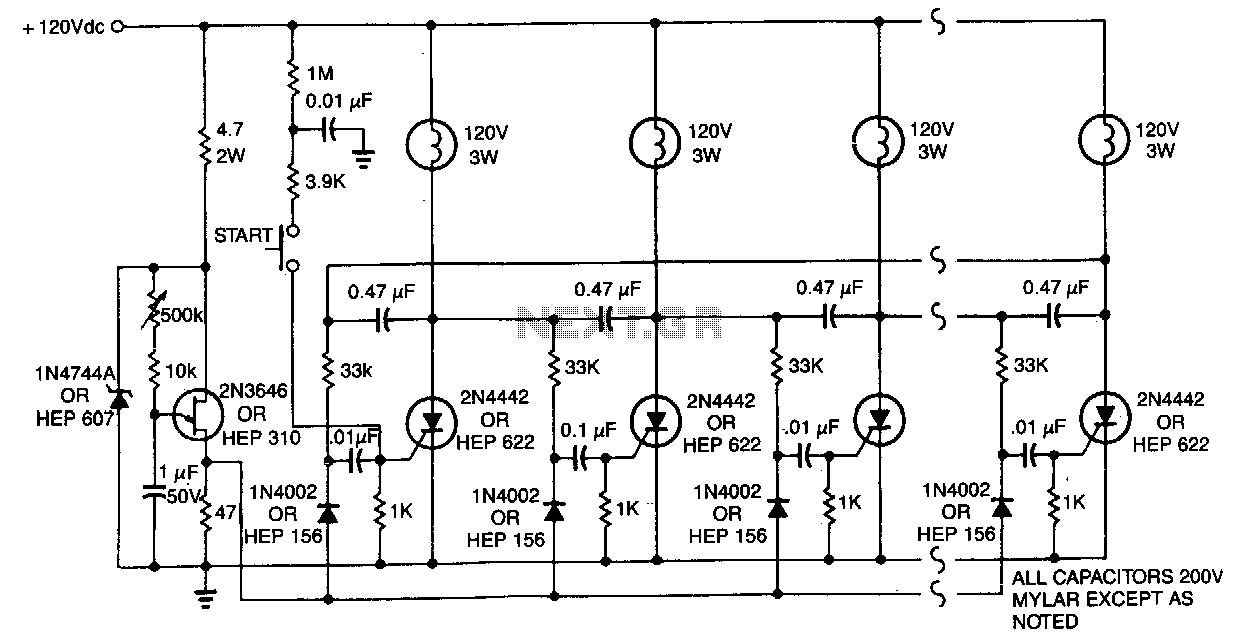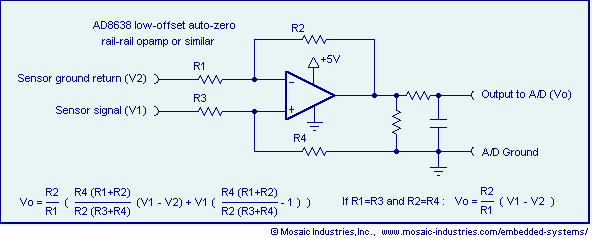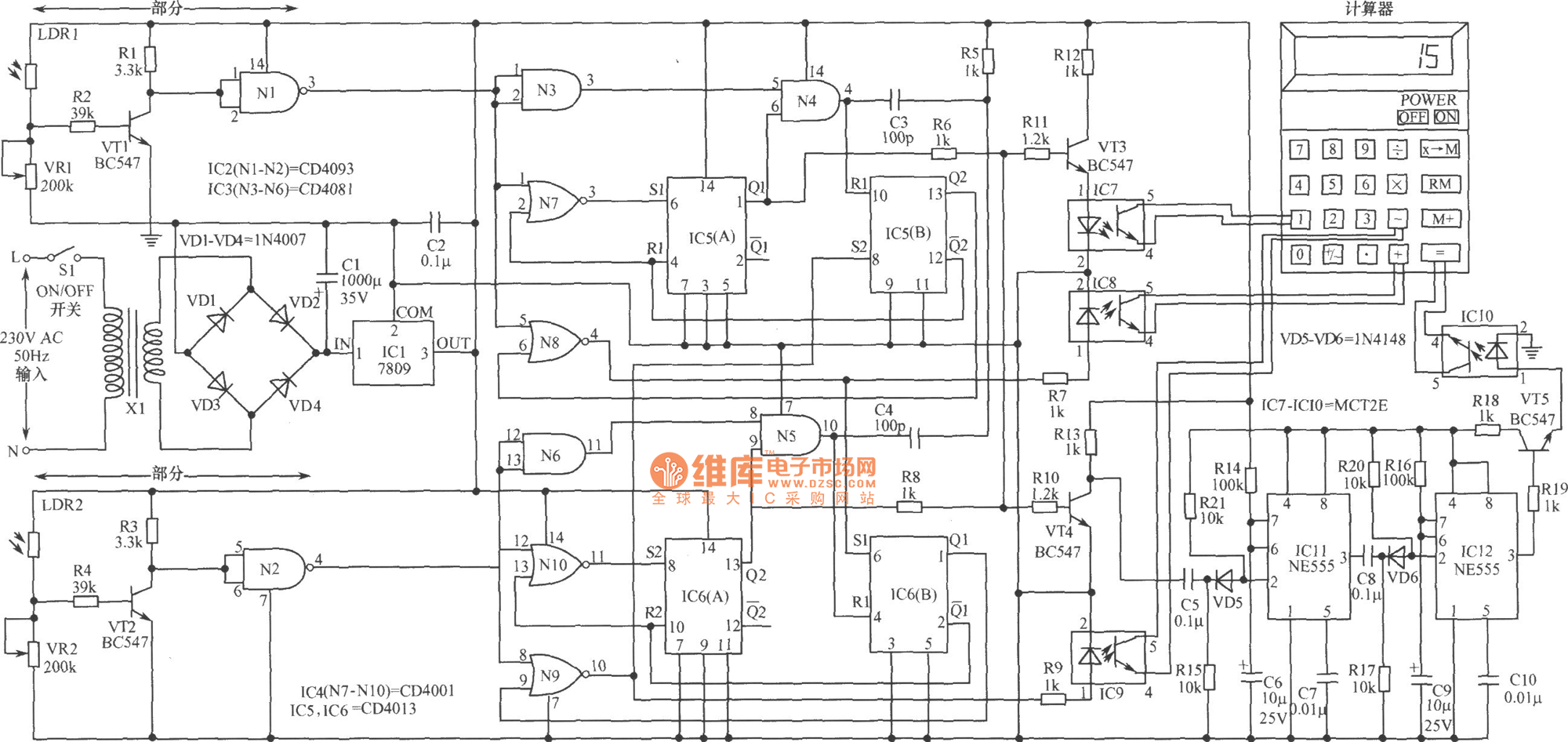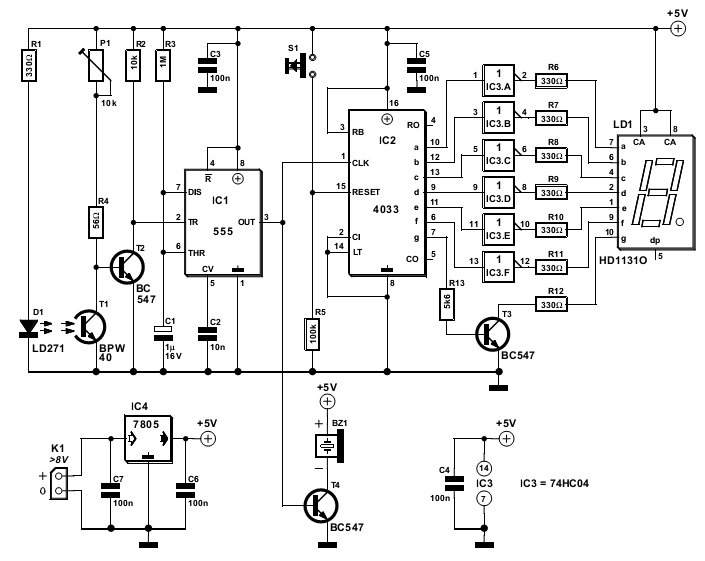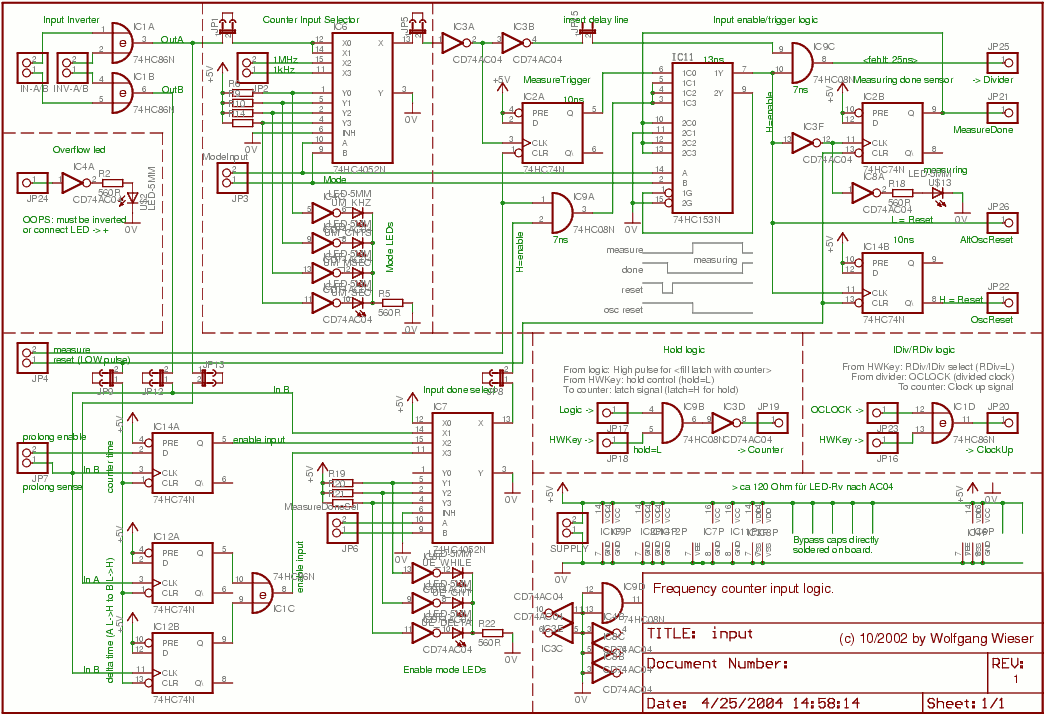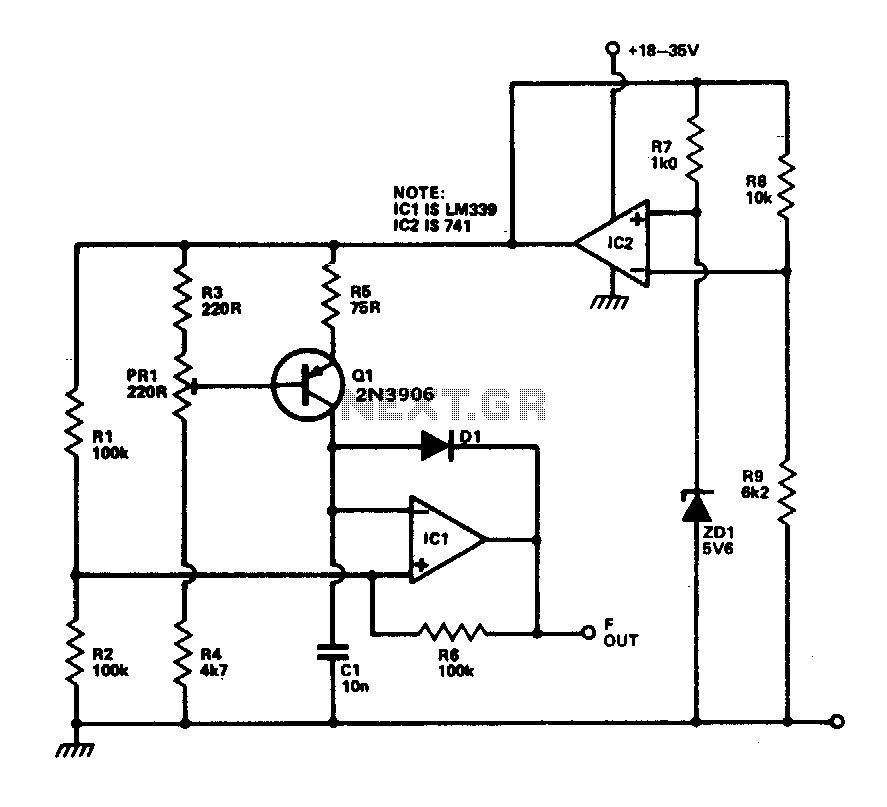
Precision frequency counter tachometer
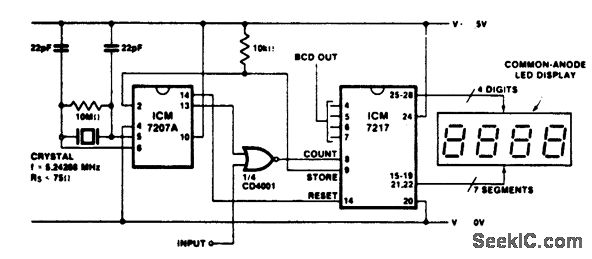
Precision frequency counter/tachometer. The ICM7207A provides a 1-second gating window along with the store and reset signals. The display reads hertz directly. When pin 11 of the ICM7207A is connected to V+, the gating time will be 0.1 seconds, resulting in tens of hertz in the least significant bit (LSB) position. For shorter gating times, a 6.5536 MHz crystal may be utilized, allowing for a 0.01-second gating with pin 11 connected to V+ and a 0.1-second gating with pin 11 open. To implement the 4-digit tachometer, the ICM7207A with a 1-second gating should be employed. To display readings directly in RPM, the rotational frequency must be multiplied by 60. This multiplication can be achieved electronically using a phase-locked loop (PLL) or mechanically with a disc that rotates with the object, featuring appropriately drilled holes for light from an LED to reach a photodevice (courtesy Intersil, Inc.).
The ICM7207A is a highly integrated frequency counter and tachometer, specifically designed for precise measurements of frequency and rotational speed. The device operates by utilizing a gating mechanism, which allows it to sample the input frequency over a defined period. The standard gating time of 1 second provides a stable reading, suitable for most applications. However, by connecting pin 11 to the positive supply voltage (V+), the gating time can be reduced to 0.1 seconds, which increases the sensitivity of the device and allows for the measurement of higher frequencies, as indicated by the least significant bit (LSB) reading in tens of hertz.
For applications requiring even shorter gating times, the integration of a 6.5536 MHz crystal oscillator is recommended. This allows the system to achieve a gating time of 0.01 seconds when pin 11 is connected to V+, significantly enhancing the responsiveness of the frequency counter for rapid signal changes. Conversely, leaving pin 11 open permits a return to the standard 0.1-second gating interval.
To create a 4-digit tachometer display, the ICM7207A is typically configured for a 1-second gating period. This configuration is optimal for most RPM measurements. To convert the measured frequency in hertz to revolutions per minute (RPM), the output frequency must be multiplied by a factor of 60. This conversion can be accomplished through two primary methods: electronically using a phase-locked loop (PLL) circuit, which can effectively multiply the frequency, or mechanically by employing a disc that rotates in synchrony with the measured object. This disc would have holes strategically drilled to allow light from an LED to pass through to a photodevice, facilitating the conversion of rotational speed into a readable format.
Overall, the ICM7207A provides a versatile platform for precision frequency measurement and tachometry, suitable for a wide range of applications in industrial, automotive, and laboratory settings. Proper circuit design and configuration of the ICM7207A will ensure accurate and reliable performance in frequency counting and RPM measurement tasks.Precision frequency counter/tachometer. The ICM7207A provides a 1-second gating window and the store and reset signals. The display reads hertz directly. With pin 11 of the ICM7207A connected to V+ the gating time will be 0. 1 second, which gives tens of hertz in the LSB position. For shorter gating times a 6. 5536 MHz crystal may be used, giving a 0. 01-second gating with pin 11 connected to V+ and a 0. 1-second gating with pin 11 open. To implement the 4-digit tachometer the ICM7207A with a 1-second gating should be used. In order to get the display to read directly in RPM the rotational frequency must be multiplied by 60. This can be done electronically using a PLL or mechanically using a disc rotating with the object with appropriate hole drilled for light from an LED to a photodevice (courtesy Intersil, Inc.
). 🔗 External reference
The ICM7207A is a highly integrated frequency counter and tachometer, specifically designed for precise measurements of frequency and rotational speed. The device operates by utilizing a gating mechanism, which allows it to sample the input frequency over a defined period. The standard gating time of 1 second provides a stable reading, suitable for most applications. However, by connecting pin 11 to the positive supply voltage (V+), the gating time can be reduced to 0.1 seconds, which increases the sensitivity of the device and allows for the measurement of higher frequencies, as indicated by the least significant bit (LSB) reading in tens of hertz.
For applications requiring even shorter gating times, the integration of a 6.5536 MHz crystal oscillator is recommended. This allows the system to achieve a gating time of 0.01 seconds when pin 11 is connected to V+, significantly enhancing the responsiveness of the frequency counter for rapid signal changes. Conversely, leaving pin 11 open permits a return to the standard 0.1-second gating interval.
To create a 4-digit tachometer display, the ICM7207A is typically configured for a 1-second gating period. This configuration is optimal for most RPM measurements. To convert the measured frequency in hertz to revolutions per minute (RPM), the output frequency must be multiplied by a factor of 60. This conversion can be accomplished through two primary methods: electronically using a phase-locked loop (PLL) circuit, which can effectively multiply the frequency, or mechanically by employing a disc that rotates in synchrony with the measured object. This disc would have holes strategically drilled to allow light from an LED to pass through to a photodevice, facilitating the conversion of rotational speed into a readable format.
Overall, the ICM7207A provides a versatile platform for precision frequency measurement and tachometry, suitable for a wide range of applications in industrial, automotive, and laboratory settings. Proper circuit design and configuration of the ICM7207A will ensure accurate and reliable performance in frequency counting and RPM measurement tasks.Precision frequency counter/tachometer. The ICM7207A provides a 1-second gating window and the store and reset signals. The display reads hertz directly. With pin 11 of the ICM7207A connected to V+ the gating time will be 0. 1 second, which gives tens of hertz in the LSB position. For shorter gating times a 6. 5536 MHz crystal may be used, giving a 0. 01-second gating with pin 11 connected to V+ and a 0. 1-second gating with pin 11 open. To implement the 4-digit tachometer the ICM7207A with a 1-second gating should be used. In order to get the display to read directly in RPM the rotational frequency must be multiplied by 60. This can be done electronically using a PLL or mechanically using a disc rotating with the object with appropriate hole drilled for light from an LED to a photodevice (courtesy Intersil, Inc.
). 🔗 External reference
